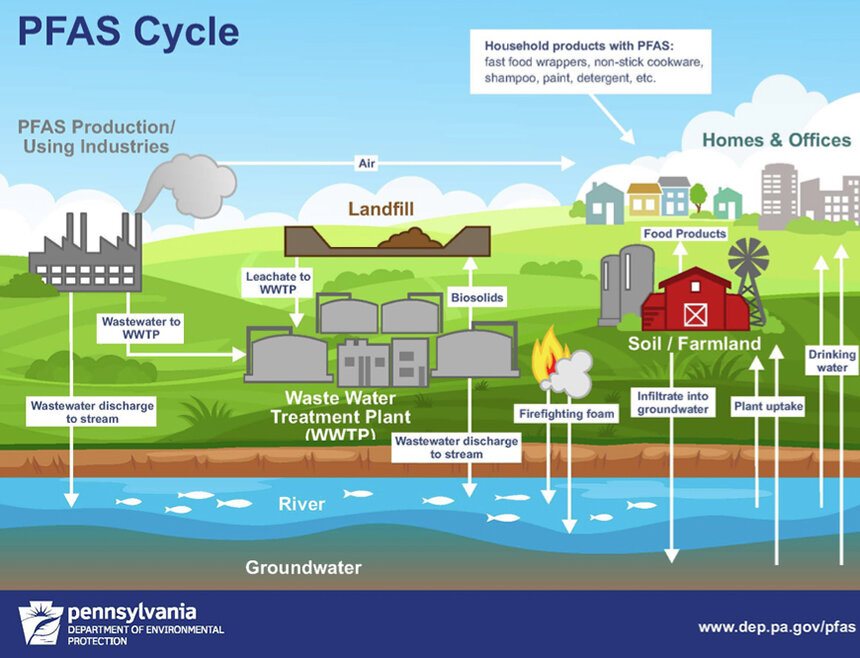Toxics Buried Under Waites Wharf Worry Newporters
Proposal to build waterfront hotel could unleash arsenic, lead, and a known carcinogen
July 17, 2020
NEWPORT, R.I. — Tucked behind the bustle of Thames Street, Waites Wharf awaits an uncertain future.
The dusty lot — currently home to a parking area, marina, restaurants, and some other buildings — is the subject of concern for a group of local residents who are afraid the possible development of a 150-room waterfront hotel on its polluted land could mean the release of toxic substances.
Throughout its history, the wharf was the location of oil tanks and warehouses owned by the Standard Oil Co., blacksmiths, auto-repair shops, and painting and welding companies. The wharf was later extended using coal ash from Newport Gas.
“Newport Gas used to burn coal and gas, and they said to the people at Waites Wharf, well we’ve got all this coal ash, would you like it? And they said sure, we’d like to extend the wharf into the harbor, make it longer. So they started dumping the coal ash in Waites Wharf,” said Charlie Donahue, a member of the Newport Waterfront Alliance, a group that wrote a recent letter to the editor published in What’s Up Newp expressing concern about the wharf’s potential development.
The area also was the site of a 1916 leak from a Texas Oil storage tank that spilled 1,000 gallons of gasoline into the harbor and the soils of the wharf, according to the Newport Waterfront Alliance.
In short, this area has taken a toxic beating. And it’s added up.
A recent site investigation report (SIR) conducted by SAGE Environmental on 10 percent of the site found that the area contained toxic chemicals, including arsenic, lead, and the carcinogen vinyl chloride, among others.
“They sent me the copy of the SIR, which I read through, and they did six borings in the area, 150 yards from the ocean. They didn’t expect to see much, but they found toxic chemicals in all sites, and in three of the six sites, they found these toxic chemicals as deep as 9 and 12 feet,” Donahue said. “A lot of us live in this area, and arsenic catches your attention.”
While these chemicals have been sitting deep in the ground, with a recent request for development of a hotel on the wharf by the property’s owner, Thomas Abruzese of New York, the Newport Waterfront Alliance is concerned that the suggested remediation plan, which includes capping a section of the wharf with clean soil, a geotextile fabric, and asphalt or concrete, won’t be enough.
“The big problem with this area is that it’s at sea level on a floodplain, and with the oceans rising, the surges of storms … we have these toxic chemicals they want to cap, and with a hurricane of some kind that asphalt won’t last very long,” Donahue said. “The bottom line is, what happens to these toxic chemicals? They’re gonna be spread around Thames Street.”
According to Joseph Martella, in the Office of Land Revitalization & Sustainable Materials Management at the Rhode Island Department of Environmental Management, the state agency agrees with the preliminary remediation plan.
“Based upon the information provided in the SIR for the three lots that were investigated, the Department concurred with the preferred remedial alternative of capping the contamination in place and recording an Environmental Land Usage Restriction (ELUR) with an associated Soil Management Plan (SMP) on the property deeds to limit future site activities and restrict future disturbance of the impacted soils once the remedy is completed,” Martella wrote in an email to ecoRI News.
What Donahue and other concerned residents want is another more comprehensive site investigation and a more intensive remediation proposal before the developer gets permission to demolish.
“There’s a lot of pressure on the parties to do the cheapest thing, which is to cap it and walk away,” Donahue said. “But our concern is for the future, for our kids, and for the people of Newport.”
Martella noted that the project is still in the investigation phase, and there are no concrete plans as to what happens next.
“The investigation and proposed remedy are currently out for public comment,” he wrote. “Once that process is completed and all applicable public comments have been appropriately addressed, the Department would then issue a Remedial Decision Letter requesting submittal of a draft Remedial Action Work Plan for review and approval by the Department.”
The two-week public commentary period on the Waites Wharf SIR began July 14. Martella noted that DEM doesn’t have jurisdiction regarding siting, zoning, or property usage, so objections to the usage of the property should be addressed to the municipality. Comments about the project’s remediation plan can be emailed to [email protected].
A decision regarding demolition of existing buildings to make way for the hotel is expected to be made by the Newport Planning Board at its meeting scheduled for Aug. 3.




Is this process of environmental review and public comment something that will go away with Trump’s latest reversal of longstanding environmental and community protections?